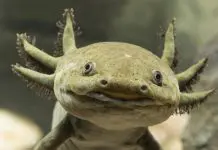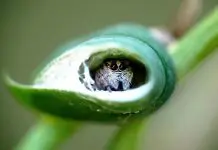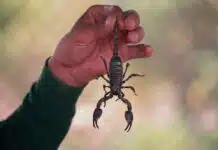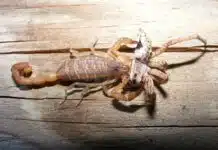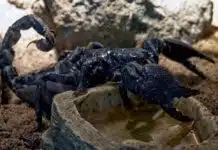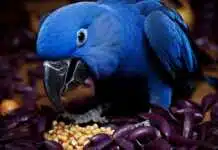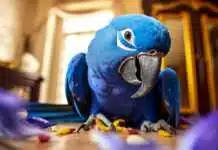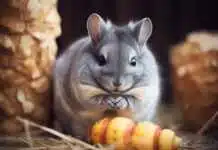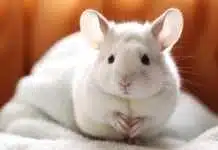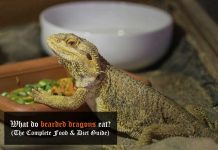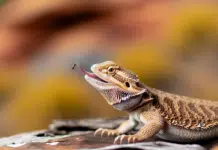Smallness is measurable, but cuteness is subjective. So you’ll have to bear with me while I marry the two, and list some of (what I think are) the undisputed champions, when it comes to cuteness. The list will include the adorably blunt-ended hognose snakes, enchanting corn snakes, and beautifully hued ball pythons. But that’s not all! Read on for more.
What is THE smallest snake breed? Measuring in at a meager 10cm (just under 4 inches), the smallest known species of snake is the Barbados thread snake. The largest specimen of Barbados thread snake ever recorded was just 4.1 inches long – not much longer than a finger – and about as wide as a spaghetti noodle.
There are a plethora of cute snake pictures out there, but I’ll start with some certifiably cute snake species. Eye candy will follow. Here are some of the best teeny tiny snakes for you to marvel at…
Hognose Snakes

Coming in a strong lead position on the scale of snake cuteness is the hognose snake. Known for its blunt, upturned snout, wide head, and large eyes, the hognose snake wins hearts wherever it roams. These amenable snakes are members of the colubrid family, which includes a great number of popular pet snakes. They vary in size, but despite being heavy-bodied, many don’t grow longer than 1 or 2 ft long.
The distinctive upturned snout is used for digging in sandy soils, which the hardy snakes achieve by sweeping their head from side to side. These keen burrowers can be found in many parts of the world, and are one of the most common pet snakes in the world of herpetoculture (snake keeping).
They are incredibly easy to care for, are only mildly venomous (rarely harmful to humans), and are well known for their habit for thanatosis. No, I’m afraid this has nothing to do with Marvel super-villains or universe domination. Rather, it is a defense mechanism whereby the snake ‘plays dead’ in order to not attract attention from predators.
All in all, this snake is the perfect pet. Its venom is barely strong enough to harm a human, its temperament is docile, and it is easy to look after. What’s more, its charming, piggish nose will have all your friends fawning!
African Ball Pythons
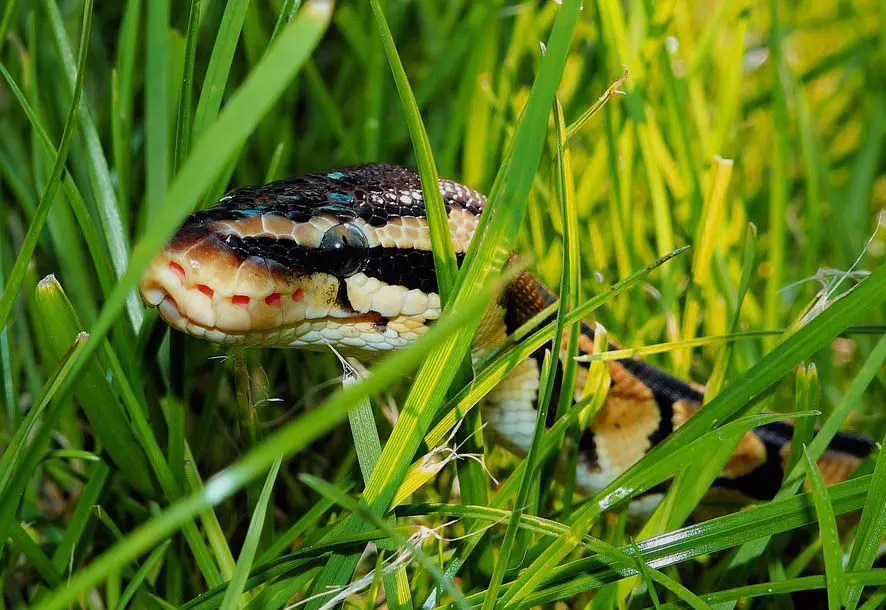
These snakes are best known for their delightful habit of curling up into a ball—cute! Also known as royal pythons, these majestic serpents are native to Central and West Africa, where they inhabit shrublands and grasslands.
While it is listed as Least Concern on conservation status lists, it is threatened by hunters for its meat, and for the international pet trade. For this reason, it’s best to buy a captive-bred ball python. This will also ensure that your pet is already adapted to live in a captive environment. Many snakes, when caught fresh from the wild, fail to adapt to their new environments. This can cause serious psychological damage, so it’s best to buy from a reputable, known breeder!
Their quirky habit of curling up into a ball is a useful way to escape from predators, and it also earns them a solid place on this list. African ball pythons tend to grow between 3 and 4 ft long, so while they’re not terribly small, they are adorable nonetheless!
Rosy boas

Rosy boas are very popular pets and come in a wondrous smorgasbord of beautiful colors and patterns. As such, they provide ample opportunity for breeders to merge different, naturally occurring base morphs (colors) into new and exciting combinations, or ‘designer morphs’. These bespoke color schemes can fetch startlingly high prices, but most ball pythons are affordable. But the things that make them particularly cute are their shy temperament and little shiny eyes.
The three most common naturally occurring rosy boa morphs are the Mexican, desert and coastal rosy boas, all of which are found in North America. Rosy boas are small (max 3 ft), non-venomous and carnivorous. Their slim-line bodies and diminutive length make them very lightweight snakes, but they can live for over 15 years in captivity!
Almost all rosy boa morphs display the instantly recognizable three stripes, which run longitudinally down its back and sides. Sometimes these lines are thick and clear-cut, sometimes they are dotted or patchy. Others blend and pixelate into the background. Their genetic variance makes them collectors’ items among herpetologist enthusiasts, and very popular pets!
Besides the three most common morphs, rosy boas come in a variety of other colors. These include (but are not limited to!) albino, axanthic, anerythristic, snow, moonglow, Picasso, ghost, ‘goldeneye’, and so on. The list goes on. And so, so should this one!
Corn snakes

Impossible to miss off this list is the regal corn snake. They might not be particularly small, but they come in a variety of stunning colorations, and can be rather small, and are often slim-bodied…
Corn snakes are rat snakes, and typically hunt by ambush and constriction. It is found throughout central and southeastern United States. They are reluctant to bite, and near harmless even when they do, and they have generally docile, even and amiable temperament. They are one of the most popular pet snakes across the United States, and with good reason!
Despite sometimes being mistaken for the deadly copperhead snake and killed on sight by clueless hikers, these snakes may actually be man’s best friend. After dogs, of course. They are well appreciated in certain rural areas for keeping rodent populations in check. This is one of the reasons why you should know your copperheads from your corn snakes—a reduction in corn snake populations would lead to a spike in rodents!
But that’s not all! If you’re into snakes, or simply curious, then there are several other serpentine sweethearts available to you as a prospective pet owner. Here are a few personal favorites, plus some which are particularly popular already.
Bimini blindsnakes (Ramphotyphlops braminus), or ‘Flowerpot snake’

There are several species of blind snake out there, digging the soils of the world with their miniature burrowing noses. The feature that unites all of them is their minuscule size—in terms of physical appearance, they are often indistinguishable from earthworms. They really are that tiny!
They love moist soil, and have frequently been found in garden flower pots – hence their common ‘flowerpot’ name. The blind snake family actually contains more than 300 species, some of which are commonly called thread snakes. Cast your mind back and you will remember that the smallest snake in the world is the Barbados thread snake. The longest blind snakes in the world reach over 3 ft, which is average overall, but giant for the blind snake family.
Some interesting features of blind snakes: they only have teeth on either their upper or lower jaw, they shed their skin in rings rather than all at once, and they sometimes dissect their prey before consuming it. As you might have guessed, this is because they are simply too small to eat many prey animals whole!
Ringneck snake (Diadphis sp.)
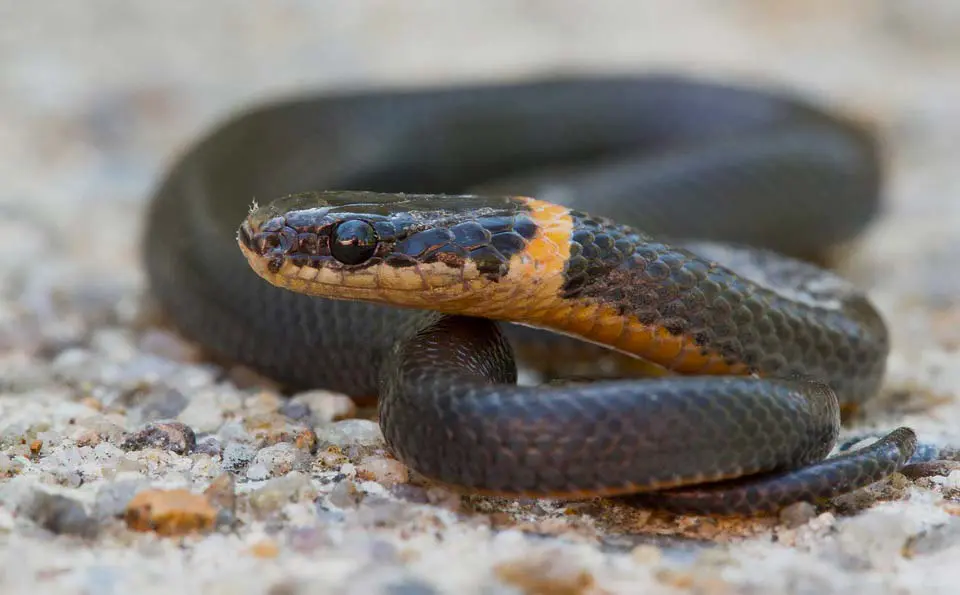
Ringneck snakes are barely larger than many blind snakes. Ringneck snake adults generally grow to somewhere between 10 and 15 inches, and they are incredibly lightweight, weighing just a few grams in adulthood.
However, these are more easily distinguishable from earthworms, because of their distinctive and characteristic bright orange collar, or necklace, which sits just behind the head. Hence the name: ringneck!
At first glance, it is easy to think these snakes are babies and will grow longer and larger. But that’s a commonly held misconception. In truth, these snakes max out at 15 inches when fully grown and mature. They are rarely thicker than a pencil, and eat anything they can get their jaws around (which, to be fair, is a relatively short list), namely worms and small invertebrates.
Pueblan milk snake

This stunning milk snake, also known as ‘Tri-color’, is incredibly popular with pet stores because of their relatively small size. They grow to a maximum of 3 ft and boast a dazzling range of hot red-orange colorations, from peach to burnt orange, with white and black patterns. They are easy to feed and can live as long as 20 years.
Once they are used to being handled, they very rarely bite. However, they do have a nasty habit of ‘musking’, which involves giving off a noxious odor from their scent glands. They do this when frightened or distressed, but with responsible and gentle handling, instances of musking can be reduced or even eliminated.
Kingsnakes

Kingsnakes are related to milk snakes, so it seems suitable for them to follow in this list. While they don’t necessarily score particularly highly on the cute scale (king snakes are cannibalistic, meaning they eat other snakes…), they don’t often grow longer than 3 or 4 ft in captivity, which makes them manageable pet snakes.
Their patterns, striped or banded, involve high-contrast stripes on a chocolate brown or black base color. They can be squirmy when young, but generally handle very well. The only thing to watch out for when it comes to keeping king snakes is that they are cunning escape artists! So make sure your enclosure is secure if you plan on keeping a king snake. Good luck!
Garter snakes

Deserving of a position on this list is the garter snake, which averages an adult length of 2-3 feet. While some individuals surpass this typical length, the majority remain quite small. They are not as widely available as king snakes, corn snakes or milk snakes, but this is just because they are underrated! They can be a bit squirmy when young, but grow out of this habit with responsible handling.
Smooth green snake

This beautiful, cute snake is long, smooth and green—as you might have guessed. It also has a rougher, longer counterpart (the rough green snake), which for obvious reasons has not made it onto this list.
Found in the United States, Mexico and Canada, these snakes are shy and non-aggressive. They normally grow to a length of 20 inches (the longest ever was 26 inches long), and are very slender.
Adults weigh approximately 30g and are definitely adorable. However, they can be difficult to keep as pets. They can be fussy and stubborn eaters, refusing to eat without any obvious reason.
Anthill python (Pygmy python)

This is the last snake on my list. Also known as the ‘pygmy python’, this is the smallest of all the python species. And as its name suggests, it really is rather small, despite being characteristically thick-bodied.
Its dull greenish pattern might not spark thoughts of overwhelming cuteness, but it deserves a place on this list nonetheless, owing to its diminutive size. Also, it has little leopard-like spots along the length of its body, which are quite cute. They grow to a maximum of 20 inches, and like all pythons have very short tails. They are found in Australia on anthills and termite mounds.
Conclusion
That marks the end of this list of the smallest and cutest pet snakes available to you as a pet owner. We’ve been through pythons, boas and colubrids and brought you a (relatively) comprehensive list of the most adorable, and diminutive, snakes out there on the pet market.

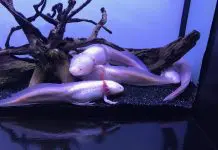
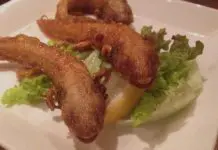
![Sick Axolotl, Fungus, Stress Symptoms [Axolotl Illness Guide 2025] Axolotl fungus](https://exopetguides.com/wp-content/uploads/2018/06/axolotl-218x150.jpg.webp)
